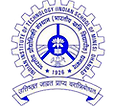
Our Research
Transition Metal Catalysis & Late-stage Modification
Our research group specializes in transition metal-catalyzed transformations, with a strong emphasis on C–H activation and cross-coupling reactions to construct valuable C–C, C–N, and C–O bonds. We have developed efficient copper-catalyzed systems for C–N bond formation, enabling the synthesis of biologically relevant nitrogen-containing scaffolds under mild conditions. Additionally, we explore palladium-catalyzed C–H functionalization and cross-coupling methodologies, focusing on chemo-, regio-, and stereoselective transformations to streamline the synthesis of complex organic molecules. Our work integrates ligand design, mechanistic studies, and sustainable catalytic approaches to enhance reactivity while minimizing precious metal dependence. By bridging fundamental organometallic chemistry with practical synthetic applications, we aim to contribute to advancements in pharmaceuticals, agrochemicals, and materials science. The discovery of fundamentally new transition metal chemistry and its development into practical, catalytic synthetic methods is a theme of our research. Our group also focuses on late-stage modification of complex molecules to rapidly diversify bioactive scaffolds, accelerating drug discovery and enabling novel therapeutic candidates.

Selected publication: (a) ACS Catal. 2023, 13, 11977–11995. (b) Org. Lett. 2023, 25, 8, 1235–1240. (c) Adv. Syn. Cat. 2025, 367, e202401498. (d) J. Org. Chem. 2025, 90, 18, 6219–6232. (e) J. Org. Chem. 2023, 88, 9, 6058–6070. (f) Org. Lett. 2016, 18, 5, 900–903. (g) Org. Lett. 2013, 15, 22, 5718–5721.
Two Chamber Enabled Gaseous Reaction
Our research group has expertise in handling of gaseous reagents in a safe, scalable, and cost-effective manner. We have developed a two-chamber system (COware) that enables efficient carbonylation reactions and ex-situ hydrogen/deuterium generation for catalytic hydrogenation/deuteration, eliminating the need for direct handling of hazardous gases and any specilized equipment. Our COware setup facilitates controlled gas release, allowing for precise optimization of reaction conditions while enhancing operational safety. By integrating modular reactor design with homogeneous and heterogeneous catalysis, we aim to bridge the gap between academic methodology development and industrially viable processes, with applications in pharmaceutical synthesis, fine chemicals, and sustainable catalysis.

Selected publication: (a) J. Org. Chem. 2022, 87, 21, 13965–13979. (b) J. Org. Chem. 2023, 88, 21, 15218 –15236 (c) J. Org. Chem. 2023, 88, 24, 17047–17061. (d) J. Org. Chem. 2025, 90, 4, 1571–1584. (e) Chem. Commun., 2017,53, 9446.
Medicinal Chemistry
Our Medicinal Chemistry research focuses on innovative therapeutic strategies targeting critical biological pathways in cancer and infectious diseases. In cancer biology, we investigate pro-apoptotic Bax protein activators to overcome treatment resistance by inducing mitochondrial-mediated apoptosis. We also explore topoisomerase inhibitors that disrupt DNA repair in rapidly dividing tumor cells. For neglected tropical diseases like leishmaniasis, we design selective inhibitors targeting Leishmania donovani topoisomerase 1B (LdTop1), leveraging its heterodimeric structure which ensures the selectivity. Additionally, we are developing DprE1 enzyme inhibitors to block decaprenylphosphoryl-arabinose (DPA) production which is the main component of Mycobacterium tuberculosis cell wall biosynthesis — a promising target against tuberculosis. Our work bridges molecular mechanisms and drug discovery to address unmet medical challenges.

Selected Publication: (a) RSC Med. Chem., 2024,15, 3097-3113. (b) RSC Med. Chem., 2024, 15, 1452-1470. (c) J. Med. Chem. 2022, 65, 9, 6454–6495.
Affordable Synthesis of FDA approved Drug molecule
Our research also focuses on the efficient synthesis of APIs (Active Pharmaceutical Ingredients) and KSMs (Key Starting Materials) for FDA-approved drugs, enabling affordable and scalable production. By redesigning synthetic routes, optimizing catalysis, and implementing green chemistry principles, we reduce costs without compromising quality. Our work spans from novel KSM development to streamlined API synthesis, ensuring robustness and sustainability. Through collaborations with industry and academia, we bridge the gap between cost-effective synthesis and cutting-edge therapeutics, making life-saving treatments more accessible while advancing synthetic methodologies for broader applications.

Selected Publication: (a) J. Org. Chem. 2025, 90, 18, 6219–6232. (b) Adv. Syn. Cat. 2025, 367, e202401498. (c) J. Org. Chem. 2024, 89, 11, 7455–7471. (d) J. Org. Chem. 2023, 88, 24, 17047–17061.

